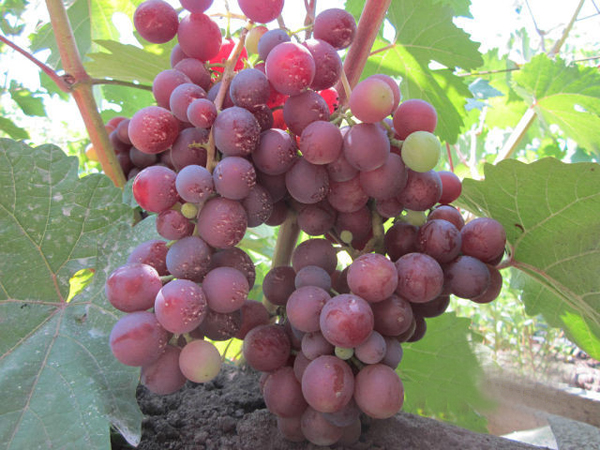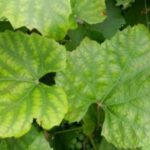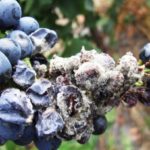Muscat grape varieties have been famous for their taste since ancient times. It was cultivated in Greece and Egypt, these varieties were very popular in Italy and France. The name Muscat grapes received for a tart flavor and aroma, which the berry acquires due to the presence of musk in it. In 1828, it was introduced to the territory of the Crimea, where it is successfully cultivated at present and is a derivative for the best varieties of muscat wines.
Table of contents
The benefits of growing muscat grapes
Muscat varieties have a high content of ternopoid compounds found in the skins of fruits. Also included in the berry are phytoncides, which have a beneficial effect on the intestinal microflora and cardiovascular system.
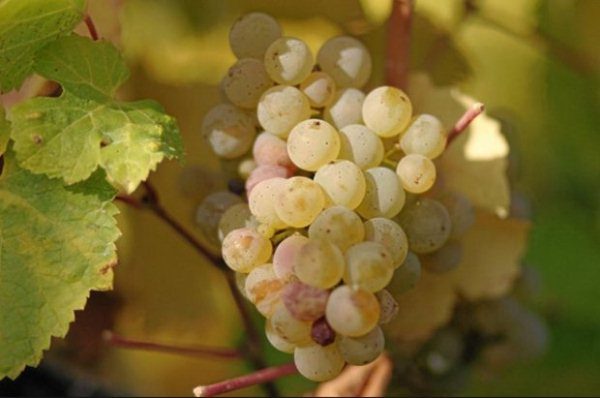
It is possible to cultivate muscat varieties in warm regions, as they are not resistant to low temperatures.
It is better to plant in spring, when the buds are still in a dormant state. This allows the root system to settle down well. In this case, the shoots will receive all the necessary substances at the expense of the roots, and not at the expense of substances accumulated in the vine.
If the planting was done in the fall, then at the beginning of May leafy green shoots will already be on the sapling. If the seedling was planted in depth 30 see, then in the spring you need to take off around the seedling 15 cm layer thus forming around the seedling a pit so that the roots warm up better. The pit is also convenient for watering an annual sapling, since watering must be done at the root. Water the seedling need 1 time in 7 days. Water consumption for each bush - 2 buckets.
The next procedure that needs to be performed is escape normalization.This procedure is to remove weak shoots. This is done to ensure that the bush does not consume excess amounts of nutrients, and redirected them to the development of healthy strong shoots. Left shoots should be located as high as possible on perennial wood, since the lower shoots are removed and the non-awakened buds remain as fruit buds for the next season in case of bush rejuvenation. Left shoots should be located on the outside of the bush. This, when forming a bush, will provide a good opportunity for removal of the sleeve.
After the earth warms up to 25 degrees after watering, the pit should be mulched. For this you can use straw. Mulch will provide an opportunity to prevent drying of the top layer of soil and will promote the uniform distribution of moisture, as well as prevent the appearance of weeds.
Top Grades
Among the many nutmeg varieties most common:
- Novoshakhtinsky;
- White;
- Blau;
- Summer;
- Donskoy;
- Pleven;
- Muscat delight;
- Madeleine.
Novoshakhtinsky
Bred was a Russian breeder Pavlovsky. Treats early ripe grades. The ripening period of the fruit is 100 days. Berries juicy, round shape, color purple-red, rolling in cherry. They have 3 bones, thin skin. The berries are not prone to cracking, have a taste of nutmeg with a caramel note. The weight of each berry is up to 10 grams, the weight of the bunch is up to 500 grams. The percentage of sugar in the fruit is 30. It brings the temperature down to -24 degrees. Harvest can not be removed from the vine for a long time, while it does not lose its taste.
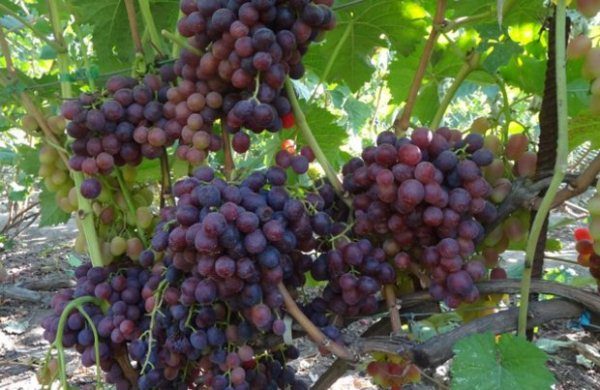
Place for growth should be well lit by sunlight and protected from the wind. A good harvest gives when growing on black soil with a neutral level of acidity.
The best landing time is spring. You can plant both seedlings and planting cuttings. Landing pits must necessarily have a drainage layer. Pit located at a distance of five meters from each other.
Care Activities:
- watering;
- loosening;
- top dressing;
- pest and disease treatment.
It is subject to such diseases as:
- black rot;
- gray rot;
- chlorosis.
- Bunch of grapes struck by black rot
- Signs of chlorosis in the grape
- Gray rot
Pests that affect this grape are:
- spider mite;
- leafworm;
- tick-itch.
For the destruction of these pests apply spraying of bushes with phytosporin.
White
Bunch of White variety - cylindrical, standard weight - 120 r although it can reach up to 450 year The berries are medium, round, with a light aroma and tender flesh. The sugar content in fruits is 20-30%. Differs in this type of wax berries.
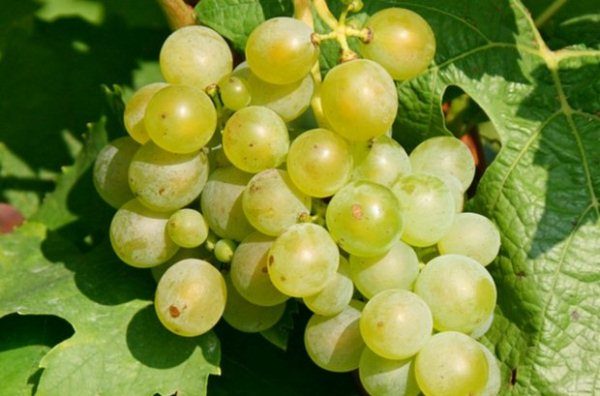
Belyi's grape bushes are vigorous, abundantly fruiting (up to 60-100 centners per hectare). Ripens around 140 days the crop is harvested as late as possible so that the berries accumulate more sugar. Fine grape White suitable for making wines.
Donskoy
Bred in 1946 in the Potapenko Research Institute by a group of breeders. It is a hybrid variety of early aging. Fruit maturity comes through 115—125 days The berries are blue-black, rounded, small, quite juicy. The skin is dense, crispy. They have 2-3 seeds, the percentage of sugar is up to 30%. The weight of each berry to 2 grams. Brushes of a cylindrical form, average density, the weight of each brush from 160 to 250 grams. Maintains up to -28 degrees of frost.
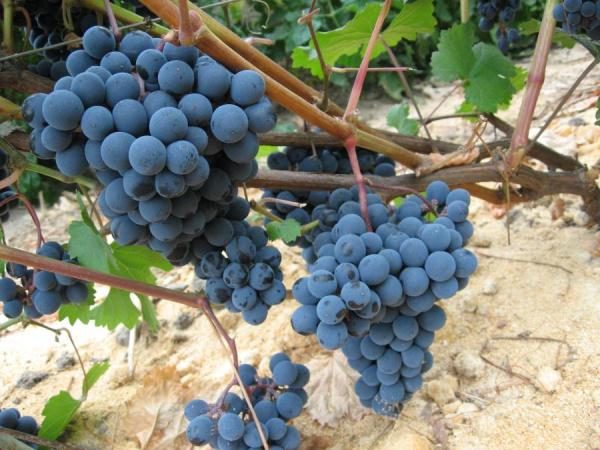
It has an average resistance to fungal diseases. Subject to severe damage to phylloxera. To combat this pest need treatment with Confidor. The soil around the bushes covered with fine sand.
Designed for the manufacture of dessert and dry wine.
Blau
The homeland of grapes is Switzerland. Treats early ripe grades Berries of the average size, have rounded shape, color black. It has one large bone. The mass of each berry - 5 gram. Clusters of cylindrical shape, weighing 300 grams, loose. Resistant to lower temperatures to -23 degrees.
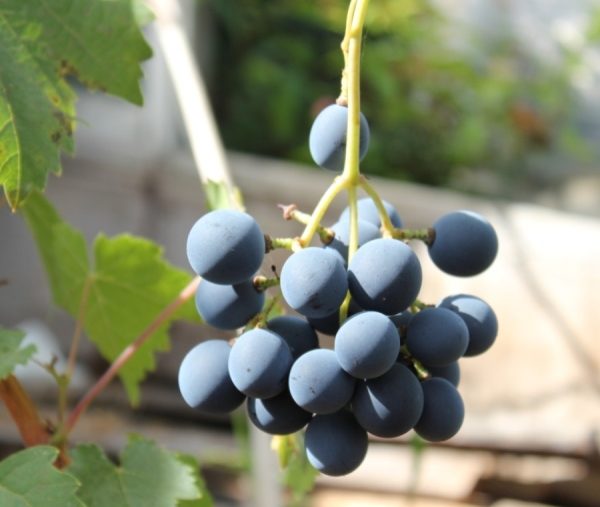
Despite frost resistance, the highest yield yields when grown in a greenhouse. Another good reason why it is recommended to grow in greenhouses was the invasion of wasps. If the bush grows on the street, the bushes must be treated with special preparations. Shows good immunity against fungal diseases and has good resistance to mildew.
Another advantage of the Blau variety is that it does not need to choose brightly lit areas. Growing in the shade does not affect the quality of the crop.
Application varieties universal. Eat it fresh, and used to make wine.
Summer
Early variety, from the moment of bud breakage to ripening 110-120 days. This grape is a strong-growing shrub with large clusters of 600-700 g. Berries are amber-white, large 7-8 g, cylindro-conical in shape, pulp is fleshy, juicy. In the period of full ripening, fruits contain 17-20% sugar.
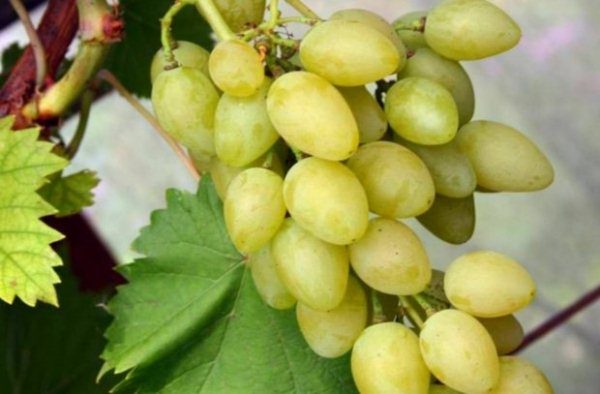
Summer Hybrid is quite frost-resistant, withstands up to -23 ° C, has good immunity to mildew and medium to oidium. Differs in high transportability.
Pleven
Bred in Bulgaria in the city of Pleven, hence its name. Grade superearly, high-yielding, productivity from one bush - 60 kg The ripening period is up to 100 days. The berries are large, yellow, the weight of each berry is up to 10 grams. The taste is sour-sweet and pleasant floral notes, has 3-4 bones. The skin is dense, thanks to which it tolerates transportation. The brushes are large, cone-shaped, the density is medium.
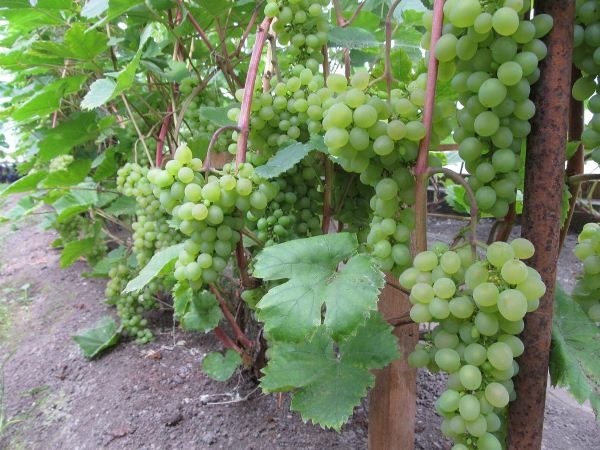
Not demanding in cultivation.On shaded areas gives the same yield as in well-lit. Weather conditions do not affect pollination. Loves the wealth of moisture and minerals in the soil. Frost resistance - up to -24 degrees.
Without special treatment suffers from diseases:
- oidium;
- mildew.
Damage by pests such as:
- phylloxera;
- groovewalker;
- wasps.
Delight
The variety is early ripe, frost resistant. The ripening period is 115-120 days. The berries are sweet, large, elongated, white and yellow. Mass of each berry 10-12 gram. The percentage of sugar in the fruit is from 20 to 26%. The clusters are large, cone-shaped, weighing up to 2 kg. It has a high yield, 120 centners from 1 hectare
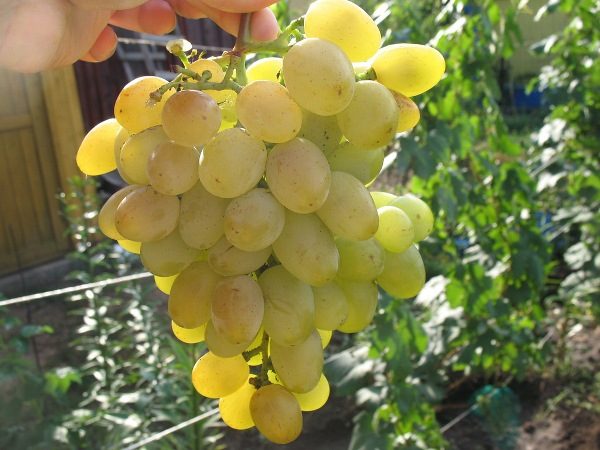
Land for planting should be well lit by the sun and protected from the wind. It prefers black soil or light loam. Bushes are planted at a distance 4-6 meters from each other. It has a high immunity to diseases, but is susceptible to phylloxera.
Madeleine
Madeleine refers to table grape varieties of early aging.The berries are round, juicy, sweet taste with a nutmeg aroma, yellow. It has 1-2 seeds, sugar content in berries is from 19 to 21%. The cone-shaped brush, with an average density, weight from 230 before 270 gram.
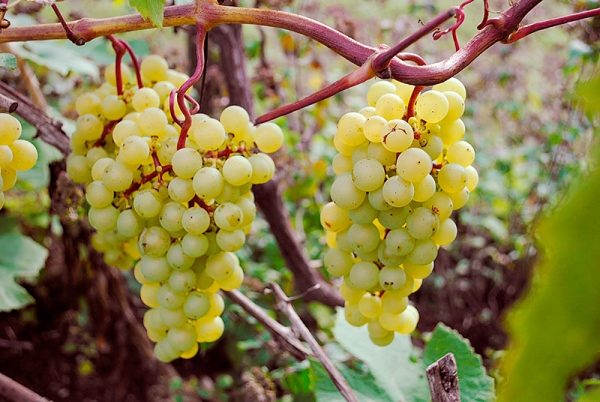
For this variety is characterized by high yields. However, the berries are prone to cracking and rotting. Planted at a distance of 1.5 meters from each other. The distance between the rows of at least 2 meters. The variety is not resistant to diseases, requires mandatory treatment from pests and diseases.
Muscat grapes are gaining immense popularity not only in the Crimea. They are successfully cultivated in other regions. With respect to the rules of planting and with proper care, you can enjoy the wonderful taste of fresh berries. and drink a glass of aromatic muscat wine.
